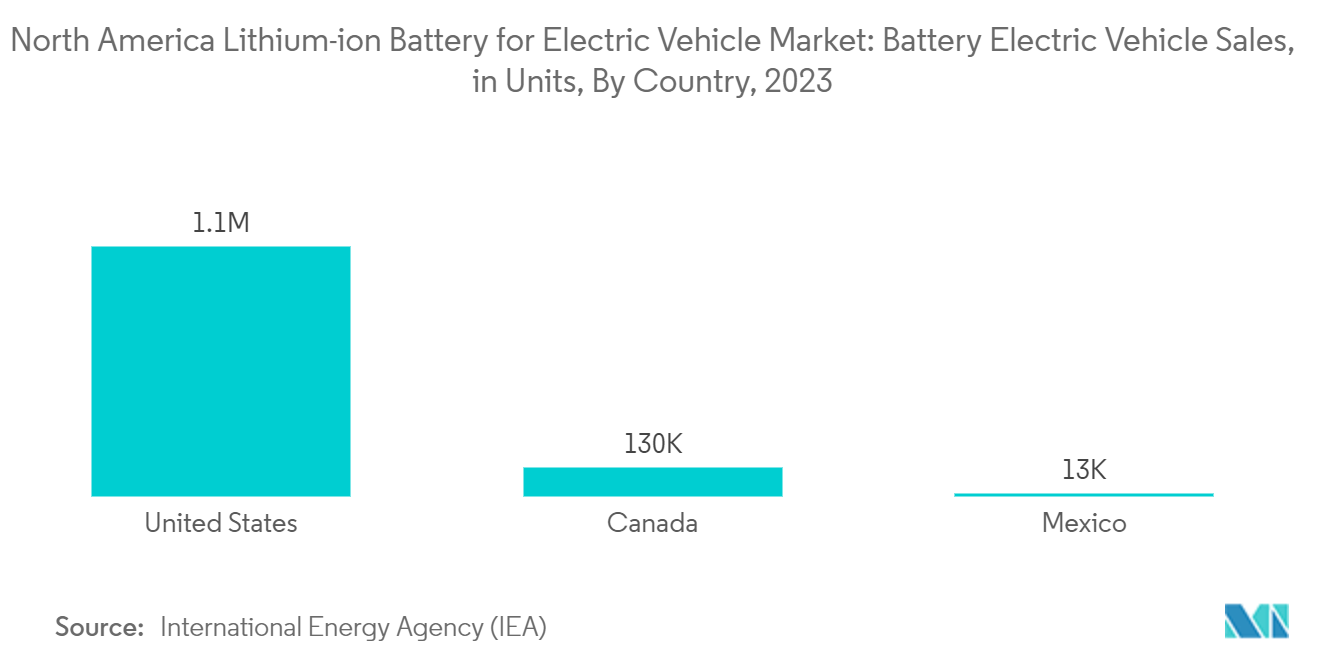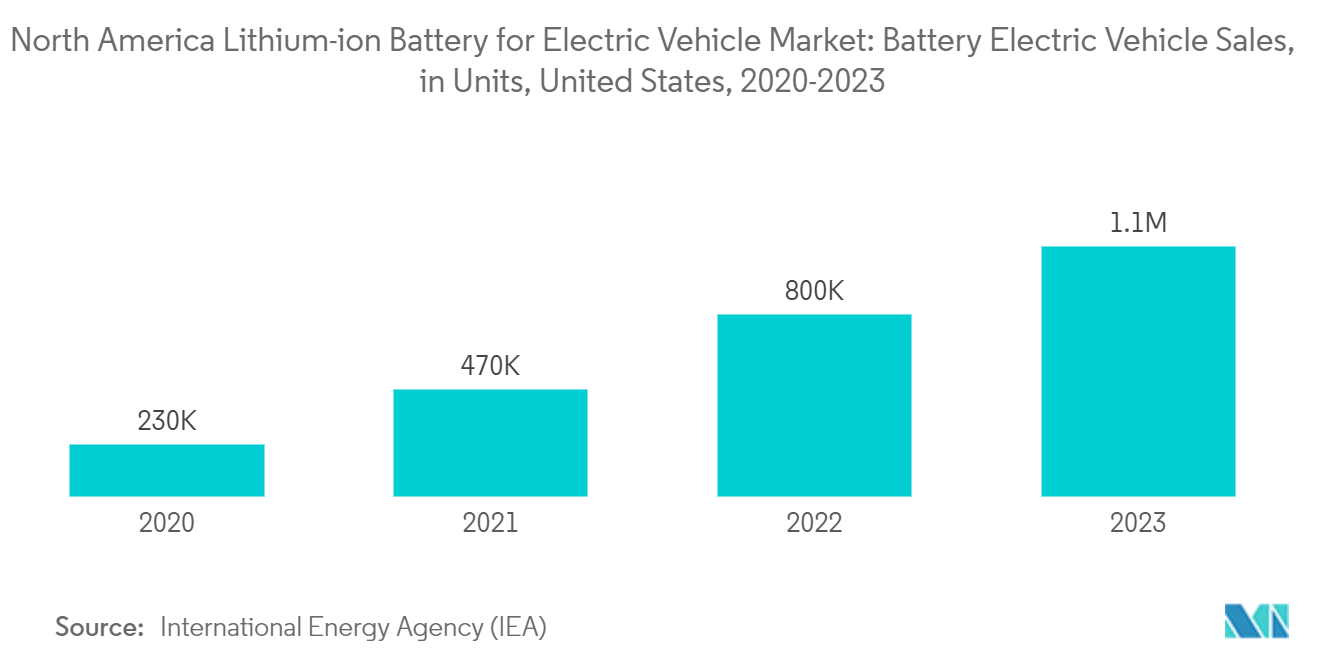Market Trends of North America Lithium-ion Battery For Electric Vehicle Industry
Battery Electric Vehicle (BEV) Segment Is Expected to Dominate the Market
- Battery electric vehicles (BEVs) are also commonly referred to as electric vehicles with an electric motor. BEVs are fully electric vehicles that typically do not include an internal combustion engine (ICE), fuel tank, or exhaust pipe and rely on electricity for propulsion. The vehicle's energy comes from the battery pack recharged from the grid. BEVs are zero-emission vehicles, and they do not generate harmful tailpipe emissions or air pollution hazards caused by traditional gasoline-powered vehicles.
- The primary factors like increasing demand for automotive vehicles across North America, growing innovation and advanced technology, rising consumer awareness about the use of fuel-efficient cars, and growing awareness to reduce greenhouse gasses and emissions are driving the demand for battery electric vehicles (BEV) across the region.
- BEVs are electric vehicles that do not have an Internal Combustion Engine (ICE), fuel tank, or exhaust pipe. They rely solely on stored electricity for propulsion. The vehicle’s energy comes from the battery, which is recharged from the grid. BEVs are zero-emissions vehicles that do not generate any harmful tailpipe emissions or air pollution hazards that traditional gasoline-powered vehicles do.
- According to the International Energy Agency (IEA), the sales of US battery electric vehicle (BEV) cars stood at around 1.1 million units in 2023, followed by Canada's sales of about 0.13 million units. As the sales of BEVs continue to rise, the demand for EV batteries, such as lithium-ion batteries, has become increasingly vital.
- In the United States, around 1.6 million electric vehicles were sold in 2023, a 60% increase from the 1 million sold nationwide in 2022. The United States accounted for 10% of all new EV registrations worldwide in 2023. Also, in the United States, the potential impact of the Inflation Reduction Act (IRA) and the implementation of California's Advanced Clean Cars II rule by multiple states could lead to a significant market share of 50% for electric cars by 2030, aligning with the nation’s target. Moreover, the anticipated implementation of the recently proposed emissions standards introduced by the United States Environmental Protection Agency is expected to contribute even more to this growing market share for electric vehicles.
- Moreover, private sector investments will most likely drive the Canadian electric vehicle battery market. For instance, in April 2023, Volkswagen and the Government of Canada declared a joint investment of more than USD 14.8 billion to build a battery manufacturing unit or gigafactory in Ontario. Moreover, the Government of Canada announced an investment of approximately USD 10.05 billion in manufacturing tax credits through 2032 to match USD 35 per kilowatt hour in production subsidies provided by the United States Inflation Reduction Act (IRA).
- Therefore, due to the factors mentioned above, the BEV segment is likely to dominate the North American lithium-ion battery for electric vehicle (EV) market over the forecast period.

United States to Dominate the Market
- Electric vehicles (EVs) have become popular owing to their eco-friendly nature and cost-effective benefits. Factors like rising fuel costs, increasing awareness about greenhouse gas emissions, and exclusive smart features have been boosting the demand for electric vehicles in the United States. This is expected to drive the electric vehicle battery market in the United States.
- According to the International Energy Agency (IEA), the US battery electric vehicle (BEV) cars sales stood at around 1.1 million units (BEV cars) in 2023, an increase of over 37.5% from around 0.8 million units in 2022. As the sales of BEVs continue to rise, the demand for EV batteries, such as lithium-ion batteries, has become increasingly vital.
- According to the Office of Energy Efficiency and Renewable Energy, in January 2023, the government was considering the planned electric vehicle battery plants in North America. The region is expected to witness a ramping up of manufacturing capacity from 55 gigawatts per year (GWh/year) in 2021 to 1000 GWh/year by 2030. Also, most of the projects in the pipeline are anticipated to initiate production between the years 2025 to 2030. This indicates a robust development of the electric vehicle battery market in the next couple of years.
- Moreover, in February 2023, Ascend Elements, a US-based battery recycling and engineered materials company, announced a basic agreement with Honda Motor Co. Ltd to collaborate on stable procurement of recycled lithium-ion battery materials for Honda electric vehicles in North America, which is expected to reduce the carbon footprint of electric vehicles.
- Owing to the above points, the increasing usage of electric vehicles in the United States is expected to dominate the North American lithium-ion battery for electric vehicle market during the forecast period.


